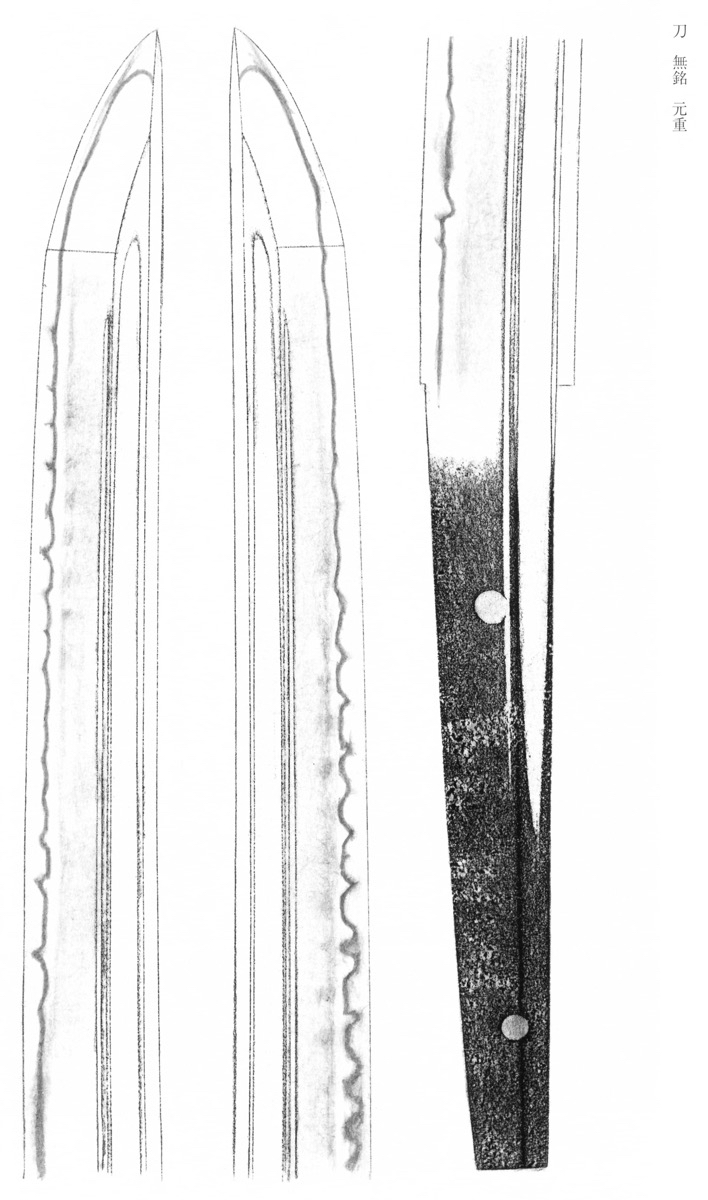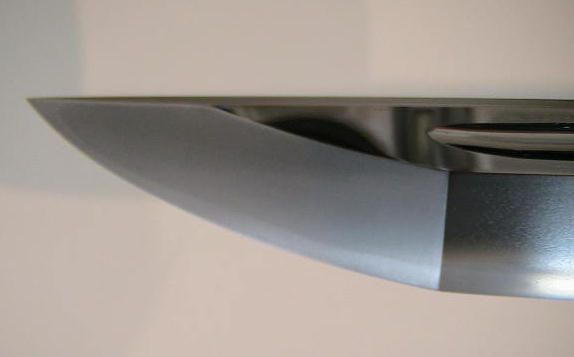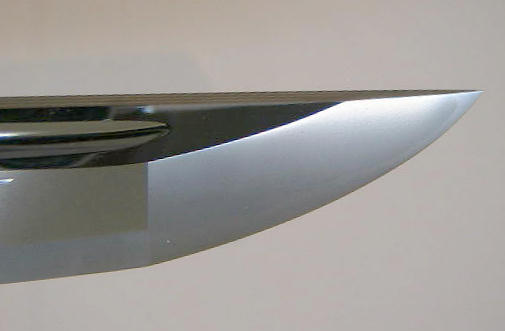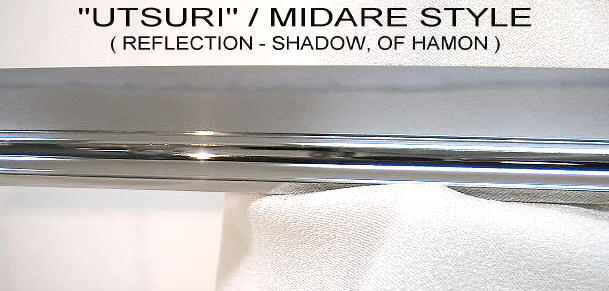Gallery Page (Display Only)
Juyo Motoshige
Kamakura Circa 1299 AD.
Soshu “Sadamune” School
Juyo token by the NBTHK
“MOTOSHIGE”, SOSHU DEN – BIZEN.
MOTOSHIGE WAS TRULY A MAKER OF DISTINGUISHED HERITAGE. HIS LINEAGE CAN BE TRACED TO TWO (BIZEN & SOSHU) OF THE MOST FAMOUS, AND POPULAR SCHOOLS OF SWORD MAKING. HIS GRANDFATHER, WAS THE FAMOUS “MORIIYE” OF BIZEN ( A NATIONAL TREASURE CLASS MAKER ). HIS SENSEI ( TEACHER ), WAS THE EXCEPTIONALLY FAMOUS “SADAMUNE”, THE SON OF SOSHU MASAMUNE, SAID TO BE THE GREATEST OF ALL MASTERS.
THIS FINE JUYO BLADE REFLECTS THE TRADITIONS OF BOTH OF THESE SCHOOLS.HIS LIFE SPAN WAS AMAZINGLY LONG FOR SOMEONE IN THE 1300’S. HIS WORKING CAREER SPANNED NEARLY 60 YEARS! IT WAS ALSO SAID THAT MANY SAMURAI WHO CARRIED “MOTOSHIGE” BLADES, HAD LONG LIFE SPANS. FOR THESE REASONS HIS BLADES ARE THE SUBJECT OF MANY LEGENDS ABOUT BRINGING LONGEVITY TO THERE OWNERS, HIS WORKS HAVE BEEN VERY SOUGHT AFTER FOR CENTURIES. THIS BLADE IS MOUNTED IN “SHIRA-SAYA”, AND IN SUPERB ( RECENTLY POLISHED ) CONDITION ( ALMOST LIKE A SHINTO BLADE, AND QUITE HEAVY ). HIS WORK IS RATED “SAIJO SAKU” ( UPPER BEST ), AND HAS A SHARPNESS RATING OF “SAIJO O-WAZAMONO” ( ABSOLUTE SUPREME SHARPNESS ) THIS IS THE “HIGHEST OBTAINABLE” SHARPNESS RATING THAT CAN BE GIVEN, THE BLADE IS AMAZING.
J?y?-t?ken at the 47th j?y? shinsa held on October 11, 2001
katana, mumei: Motoshige (??)
T?ky?, Fukatsu Naoki (????)
Measurements
nagasa 66.3 cm, sori 1.0 cm, motohaba 2.9 cm, sakihaba 2.2 cm, kissaki-nagasa 4.9 cm, nakago-nagasa 17.8 cm, no nakago-sori
Description
Keij?: shinogi-zukuri, iori-mune, wide mihaba, no noticeable taper, very shallow sori, ?-kissaki
Kitae: overall standing-out itame that is mixed with mokume and nagare and that features ji-nie, fine chikei, jifu, and a midare-utsuri
Hamon: based on an angular gunome in ko-nie-deki with a rather tight nioiguchi and mixed with gunome, ko-ch?ji, ko-gunome, prominent indentations referred to as negative togariba, ashi, y?, and a few kinsuji and sunagashi
B?shi: notare-komi with a brief kaeri that tends to yakitsume
Horimono: on both sides a b?hi with ry?-chiri and a soebi that both run as kaki-nagashi into the tang
Nakago: ?-suriage, kirijiri, kiri-yasurime, two mekugi-ana, mumei
Explanation
Motoshige (??) was a smith of the Bizen Osafune School, but belonged to a different local lineage than for example Kanemitsu (??) and Ch?gi (??). We know dated works from the end of the Kamakura period, i.e. the Sh?wa era (??, 1312-1317), to the mid-Nanbokuch? period, i.e. the J?ji era (??, 1362-1368), and there exists the theory that two generations have been active over that period of time. As for Motoshige’s workmanship, he forged a kitae that is mixed with nagare-masame and jifu and hardened a hamon with prominent angular gunome, slanting elements, and hataraki like saka-ashi and y?, and with the pointed kaeri, we recognize certain Aoe (??) elements. This tendency towards Aoe is regarded as a characteristic feature of Motoshige.
This blade shows an overall standing itame that is mixed with mokume and nagare and that features ji-nie, fine chikei, jifu, and a midare-utsuri. The hamon is based on an angular gunome in ko-nie-deki with a rather tight nioiguchi and is mixed with gunome, ko-ch?ji ko-gunome, ashi, y?, kinsuji, and sunagashi. Thus, the interpretation clearly reflects the characteristic features of Motoshige. In addition, particularly the ji showing a midare-utsuri whose antai is mixed with jifu and the hamon being based on an angular gunome that is frequently interrupted by indentations that are referred to as negative togariba is very typical for the smith. The blade feels massive in hand and has plenty of niku and we have here a textbook example of Motoshige that is of an outstanding deki.
This Sword is not available for purchase.
If you wish to purchase a Japanese Sword, please view our Nihonto for sale page or contact us directly via email or by telephone at 1(608) 315-0083 any time. Please include specifics of what you seek, i.e.: Katana, maker, era, price range, etc.
Pictures and content may not be copied without the express permission of samuraisword.com ©











